Southern Italy
Most visitors in Italy spend all their time in northern Italy, never venturing further south than Rome. There are several legitimate reasons for this, but anyone who wants to get “off the beaten path” in Italy will typically find it more difficult to do in northern Italy than in the southern parts of the country.
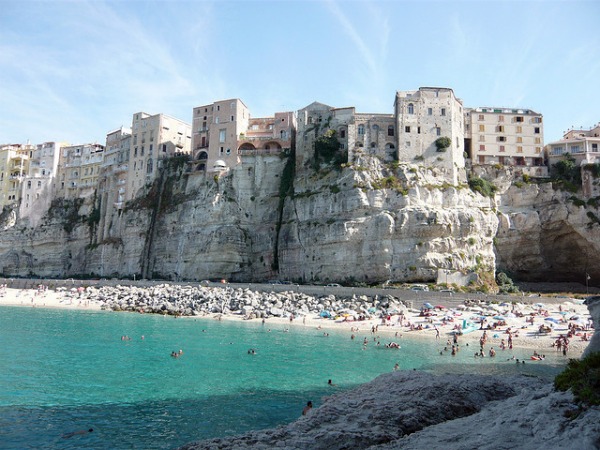
Generally speaking, if you want to really get away from the crowds, you’d be smart to head south. The regions that comprise southern Italy make up a little less than half of Italy’s total land mass, but they hold a fraction of the population – and even fewer visitors. The people who travel most in southern Italy are Italians – the region is famous for its beaches (among other things), so vacationing Italians and some from elsewhere in Europe make a beeline for the best beaches in Italy every summer.
But being surrounded by Italians on holiday is a bit different than being caught up in a crowd of tour groups in the middle of the Vatican Museums, right?
Quick links to planning resources:
- Why southern Italy isn’t on most tourist to-do lists
- Why southern Italy should be on your to-do list
- What regions make up southern Italy
- Cheap Airfare to Naples
- Cheap Airfare to Sicily
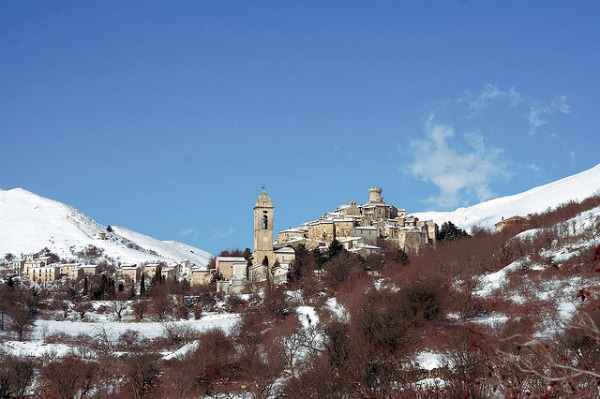
Anti-southern Italy sentiment runs deep, especially in northern Italy.
Southern Italy has historically lagged behind the country’s northern half in terms of things like literacy, economic advancement, and attracting outside investment. While the city-states in the north were prospering individually (and often at war with one another), the south focused entirely on one kingdom – the one which grew up around Naples. Because the south was more traditionally agricultural and less reliant on trade, the parts of southern Italy which were further from Naples were cut off from the same kind of economic growth experienced by city-states with lots of incoming merchants.
Today, southern Italy is commonly referred to by some in the north as the “Mezzogiorno,” and though the term has fairly innocuous origins, it’s considered to be more than a little derogatory in modern Italy. The North-South divide in present-day Italy is very real, and persistant. One political party in the north has made almost an entire platform of wanting to separate the North from the South, and a popular (if incredibly rude) notion is that anything south of Rome is basically Africa.
The Italian government’s initiatives in the 20th century aimed at directing proportionally more of the country’s tax revenue to the south only aggravated those in the north who resented where “their” money was going. Although there’s some evidence that those subsidies and investment has helped the economic situation in the south, many argue that those measures have also prevented southern Italy from making strides on its own.
There is occasionally talk of splitting Italy into two countries, although the motivations are completely different – in the north, some are tired of working hard to make money that (in their eyes) then just gets sent south, and in the south some are tired of feeling like the redheaded stepchild. While Italy remains more a cobbled-together nation of city-states than a truly unified country in many respects, the reality is that it’s very unlikely Italy will split itself across the middle.

Why do so many tourists overlook southern Italy?
The “big three” must-see stops in Italy – as I call them, the “holy trinity” of Italian tourism – are Rome, Florence, and Venice, all of which are in northern Italy. Anyone who’s taken a few minutes to look over their options for an Italy trip knows that the country’s riches extend far beyond these three cities, and yet so many of the things Italy is world-famous for can be checked off a tourist’s to-do list in or near those places that it’s easy to understand why many never bother to unfold the map any further.
There’s a great quote from guidebook author and tour guide, Rick Steves, where he encapsulates why so many tourists avoid southern Italy – and, on the flip side of that coin, why some people are drawn to it. The emphasis in the quote below is mine:
If you like Italy as far south as Rome, go further south. It gets better. If Italy is getting on your nerves by the time you get to Rome, think twice about going further. Italy intensifies as you plunge deeper.
Italy can be intense, and for some people Rome is about as intense as they want their vacations to get. For others, the possibility that their surroundings could get even more intense is intoxicating. You may not know which category you’ll fit into until you get there, but the good news is that if you only get as far as Rome and find that you’re hungry for more – you can always go further south the next time you visit.

Why should I go to southern Italy?
That little (and I do mean little) history lesson above isn’t meant to make you shy away from visiting southern Italy. On the contrary, it’s to point out that while travel in southern Italy may be more challenging than in northern Italy, where it feels like the red carpet is laid out for tourists (and translated into seven languages, at that), you’re more apt to see what people are always calling “the real Italy” if you get away from the heavily touristed regions of the north. Plus, the south of Italy is, almost without exception, going to be cheaper to travel in than the north – and that’s good news for any budget traveler.
The cultural influences you’ll see in southern Italy are slightly different than the ones you’ll recognize in northern Italy. For instance, Sicily is home to several important Greek ruins, as it was home to a large Greek settlement dating back to the 8th century B.C.E. The south is also where you’re more likely to see influences from northern Africa, both in terms of some of the architecture and the cuisine.
You’ll find different food specialties and perhaps some wine varietals you’re unfamiliar with – and yet you’ll find the same passion for quality food throughout the country. You may encounter fewer people who speak English well, and more who more frequently speak not Italian but their local dialect. The south’s historic ties to an agricultural economy are paying off in a big way more recently as agriturismo is growing in popularity throughout Italy, although agriturismo is still more commonly known in regions like Tuscany and Umbria.
If you don’t think you can handle a more intense Italy for your entire vacation, never fear – there are several popular and heavily touristed (not to mention expensive!) resort areas in southern Italy, too. These beach cities and towns are the ones that may, as I mentioned above, be crowded with vacationing Italians rather than foreigners, but their tourist infrastructure is more robust than many rural parts of southern Italy.
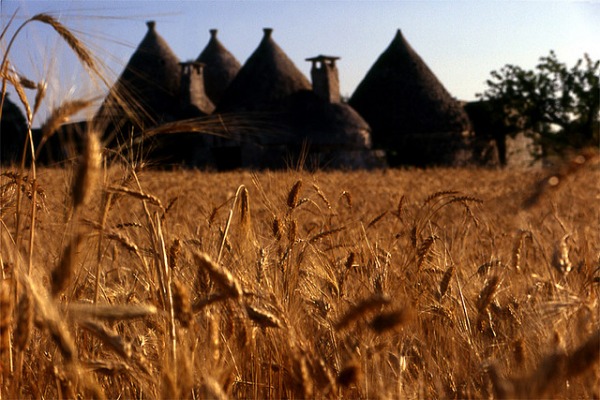
What are the regions that are considered part of southern Italy?
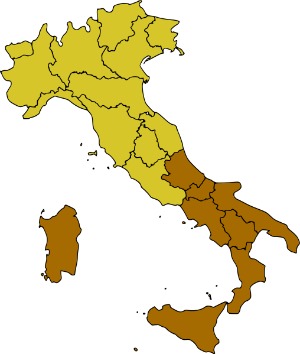
- Abruzzo – L’Aquila, Pescara, Chieti, Sulmona
- Basilicata – Potenza, Matera, Metaponto, Maratea, Policoro
- Calabria – Catanzaro, Reggio Calabria, Tropea, Cosenza, Squillace, Badolato
- Campania – Naples, Amalfi Coast, Pompeii, Sorrento, Salerno, Caserta
- Molise – Campobasso, Isernia, Larino, Termoli, Agnone
- Puglia – Bari, Lecce, Brindisi, Taranto, Alberobello, Ostuni, Otranto
- Sardinia – Cagliari, Olbia, Sassari, Alghero, Nuoro, Costa Smeralda
- Sicily – Palermo, Catania, Siracusa, Trapani, Taormina, Agrigento, Ragusa
Going back to that Rick Steves quote I mentioned earlier, because southern Italy is more intense in many ways than northern Italy, it’s not necessarily the kind of trip everyone will enjoy. I do believe there’s something of southern Italy that anyone can love, if it’s approached in the right way and with the right information.
If you’re not sure, that’s fine – plan your trip to northern Italy to get your feet wet. I think if you consider northern Italy to be a good Italian sampler plate, you can think of southern Italy as Italy on steroids. Everything you felt in northern Italy will be amplified in southern Italy, so while it’s not a trip to be taken without consideration, it’s a trip you’ll remember forever.
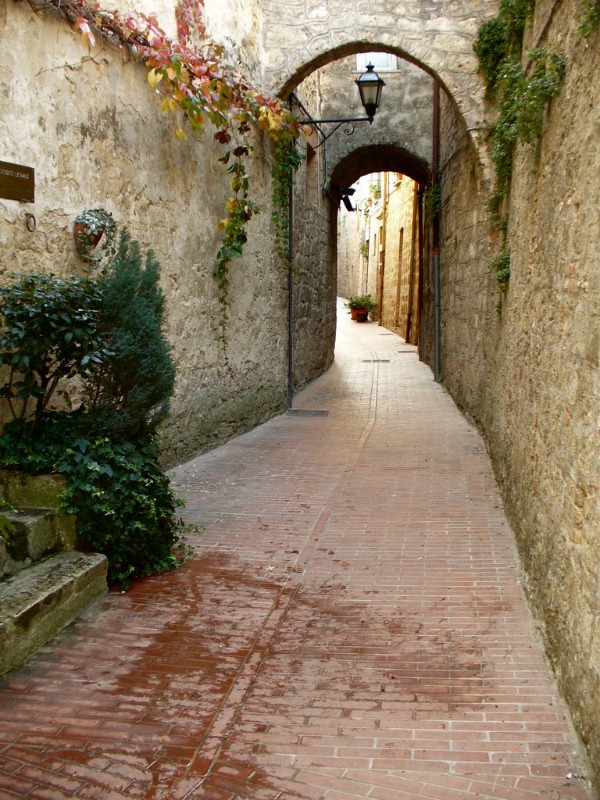
photos, top to bottom, by: simo0082, wolfango, piervincenzocanale, malex.org, _Zeta_, Mnemnoc, pizzodisevo